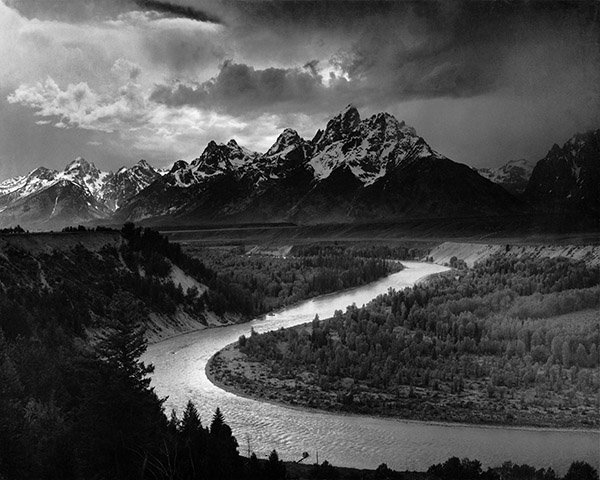Ansel Adams: Master of the darkroom
Last year, I attended a lecture given by California photographer John Sexton, a former assistant and associate to Ansel Adams. In his lecture, he recalled an example of working with Adams in the darkroom where Adams was attempting to print a negative he had taken approximately 50 years earlier. Over the intervening decades, he had tried printing the negative but had never been satisfied with the results. Over the course of several days of working 3-4 hours a day on the image in the darkroom, Adams finally achieved a print he was happy with. Sexton recalled Adams beaming to have finally produced a successful print from the negative taken 50 years earlier.
I find this such an inspirational story for a couple of reasons. The story inspires me because of Adams’ passion for his work and his perseverance of working on an image over a period of 50 years before getting a satisfactory result. But the story also inspires me because it reminds us how much darkroom work that Adams did on his images. In his lecture Sexton even showed a before and after comparison of one of Adam’s images, and the results were dramatic. Of course, Ansel Adams photography was dramatic and he achieved much of the drama in the dark room. The analogy that Adams used was that capturing the image on camera was like composing a musical work, and printing the image was a performance of that music. It’s a great analogy.
Much of Adams’ work doesn’t look “natural” (using the term very loosely). Take the following example of “The Tetons – Snake River”. In printing the negative, he has injected so much drama that adds to the image captured by the camera. He takes the beautifully composed image that he has captured on the camera and adds so much more by his ‘performance’ in the darkroom. Perhaps what’s most inspirational about this is that we don’t see the image as we would see it if we went to The Tetons, but we see it as Ansel Adams saw it and felt it as an artist.

“The Tetons – Snake River”, Ansel Adams (1940)
Image reproduced under “fair use” doctrine.
By the way, Sexton’s work is well worth checking out. He is best known for his black and white nature and landscape photography as well as being a master print-maker. Sexton also gives an inspiring and captivating lecture if you ever have the chance to attend one.
